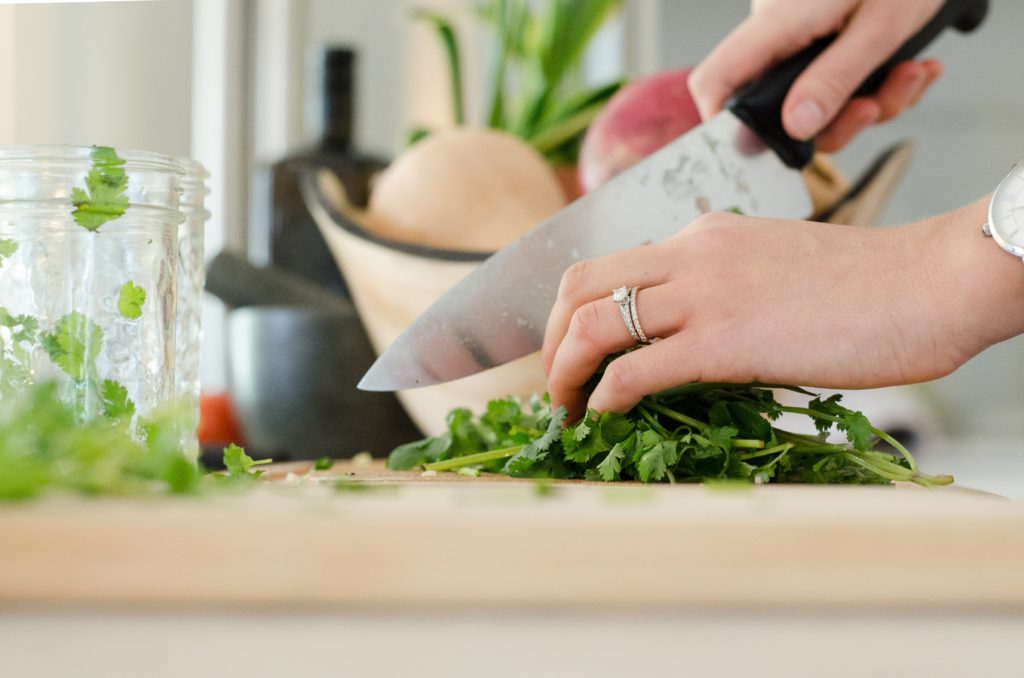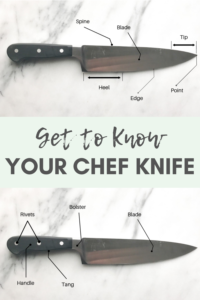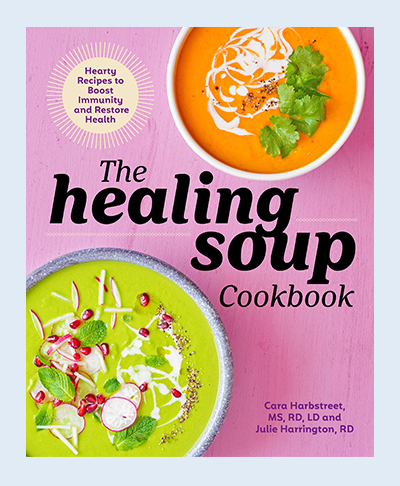This post may contain affiliate links. Read my privacy policy.
The chef knife – one of the most used pieces of kitchen equipment, but do you really know everything about it?
A chef knife, also known as a utility knife or French knife, is the most valuable tool as it can handle many tasks in the kitchen. Each part of the knife has a specific function. Understand these functions to help you better choose a chef knife that would be the best fit for you.
Each knife has a blade, handle, bolster, tang, and rivets.
Blade:
The blade is the sharp, flat portion of the knife used for cutting. Most knives are made from high-carbon stainless steel, which can be easily sharpened and resistant to rust and discoloration.
Knife blades have five parts: the point, tip, heel, edge, and spine.
- The point is the foremost section of a knife tip that can be used as a piercing tool.
- The tip is the front quarter of the knife blade. Most cutting is accomplished between the tip and the heel.
- The heel is the rear portion of the blade. The heel is used to cut thick food items when more force is required.
- The edge is the sharpest part of the knife blade that is between the tip and the heel.
- The spine is not sharp and opposite the edge.
Handle:
The handle of the knife should be comfortable and properly fit the hand. The weight of the handle may differ, so find one that fits your hand best and is comfortable for you.
Bolsters:
Not all knives have bolsters. The bolster is a thick band of metal where the blade meets the handle. The purpose is to provide strength to the knife blade and to prevent slipping from the handle during the cutting process.
Tang and Rivets:
The tang is the tail of the knife blade that extends into the handle. The tang is secured to the handle with rivets. The rivets are metal fasteners to secure the tang to the handle. There are

- A full tang extends to the end of the handle and typically contains several rivets.
- A partial tang extends only a partial amount into the handle and had fewer rivets. Partial tangs are less durable but are lighter to handle.
- A rat-tail tang is a narrow rod of metal that runs the length of the knife handle and no rivets are needed to hold it in place. Knives with a rat-tail tang are less durable than both a full and partial tang knives.

For me, investing in a good kitchen knife is key. Personally, the chef knife is the most used kitchen equipment I use daily.
These are the basics of your chef knife, but stay tuned for more information! Coming up we will talk about different styles of knives and their different uses.
Comment below of questions you have about your knives or kitchen equipment that I can answer in future posts!
This post may contain affiliate links. To find out more information, please read my disclosure statement.
References
50 effective knife techniques
Michael McGreal – American Technical Publishers – 2017









Pingback: The Secret to Cutting Brownies Neatly - Chef Julie Harrington, RD